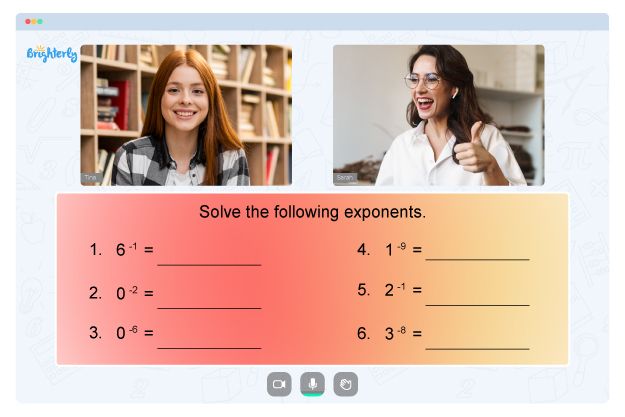Expanded Form – Definition, FAQs, Practice Problems, Examples
Created on Jan 12, 2024
Updated on January 12, 2024
Welcome to Brighterly – the ultimate platform for math for children! We’re excited to help young minds explore the fascinating world of numbers. Today, we’ll be discussing a fundamental concept called Expanded Form. In this article, you’ll learn about what expanded form is, how to write numbers in expanded form, and understand decimals in expanded form. You’ll also find solved examples and practice problems that you can use to improve your skills. And remember, at Brighterly, we offer the best math worksheets for kids to make learning engaging and enjoyable!
What Is an Expanded Form?
Expanded form is a fundamental concept in mathematics that provides a clear representation of numbers by breaking them down into their individual place values. This method of writing numbers emphasizes the value of each digit and sheds light on the composition of numbers. By mastering expanded form, children can develop a more profound understanding of the number system, enhance their mental arithmetic skills, and cultivate a more intuitive approach to solving mathematical problems. Additionally, expanded form serves as a useful tool when comparing numbers or performing arithmetic operations.
How to Write Numbers in Expanded Form?
Writing numbers in expanded form entails decomposing a number into its component parts, based on their respective place values. To achieve this, follow these steps:
- Identify the place value of each digit in the number.
- Multiply the digit by its corresponding place value.
- Combine the resulting products.
Let’s delve into an example for better clarity:
Example: Write the number 7,413 in expanded form.
- Identify the place values: 7,000 + 400 + 10 + 3
- Multiply the digits by their place values: (7 × 1,000) + (4 × 100) + (1 × 10) + (3 × 1)
- Add the products together: 7,000 + 400 + 10 + 3
Hence, the expanded form of 7,413 is: 7,000 + 400 + 10 + 3.
Writing Numbers in Expanded Form
Let’s explore another example to further illustrate the process of writing numbers in expanded form:
Example: Write the number 45,728 in expanded form.
- Identify the place values: 40,000 + 5,000 + 700 + 20 + 8
- Multiply the digits by their place values: (4 × 10,000) + (5 × 1,000) + (7 × 100) + (2 × 10) + (8 × 1)
- Add the products together: 40,000 + 5,000 + 700 + 20 + 8
As a result, the expanded form of 45,728 is: 40,000 + 5,000 + 700 + 20 + 8. By breaking down numbers in this manner, children can quickly recognize the significance of each digit and develop better number sense, ultimately improving their overall mathematical proficiency.
Expanded Form of Decimal Numbers
Let’s consider another example to illustrate the process of writing decimal numbers in expanded form:
Write the number 156.204 in expanded form.
- Write the whole number part in expanded form: 100 + 50 + 6
- Break down the decimal part: 0.2 + 0.004
- Add the decimal place values together: 100 + 50 + 6 + 0.2 + 0.004
So, the expanded form of 156.204 is: 100 + 50 + 6 + 0.2 + 0.004.
Solved Examples On Expanded Form
Here are some additional examples to help you understand expanded form better:
Example 1: Write the number 5,907 in expanded form.
(5 × 1,000) + (9 × 100) + (0 × 10) + (7 × 1) = 5,000 + 900 + 7
The expanded form of 5,907 is: 5,000 + 900 + 7.
Example 2: Write the number 0.678 in expanded form.
(6 × 0.1) + (7 × 0.01) + (8 × 0.001) = 0.6 + 0.07 + 0.008
The expanded form of 0.678 is: 0.6 + 0.07 + 0.008.
Practice Problems On Expanded Form
Now that you understand how to write numbers in expanded form, try these practice problems to reinforce your learning:
- Write the number 13,579 in expanded form.
- Write the number 7,052 in expanded form.
- Write the number 92.41 in expanded form.
- Write the number 0.305 in expanded form.
Don’t forget to use the best math worksheets for kids available on the Brighterly homepage to further enhance your skills!
Conclusion
Expanded form is a cornerstone concept in the realm of mathematics, particularly for children learning through Brighterly’s math for kids. Gaining mastery over expanded form enables students to delve deeper into the understanding of numbers and their place values, building a strong foundation for more advanced mathematical concepts. By honing this skill, learners can bolster their mental arithmetic abilities, instill confidence when working with numbers, and foster a lifelong love for mathematics.
At Brighterly, we strive to make learning mathematics an engaging, enjoyable, and enlightening experience for children. By incorporating expanded form into our curriculum, we empower young minds to develop a solid grasp of the number system and improve their problem-solving capabilities. As students progress through our carefully designed courses, they will discover that mathematics can be both exciting and accessible.
Frequently Asked Questions On Expanded Form
What is the purpose of writing numbers in expanded form?
The purpose of writing numbers in expanded form is to break them down into their individual place values, which helps to illustrate the value of each digit in a number and provides a clearer understanding of how numbers are composed.
How do you write numbers in expanded form?
To write numbers in expanded form, you need to identify the place value of each digit, multiply the digit by its place value, and then add the resulting products together.
Can expanded form be used for decimal numbers?
Yes, expanded form can be applied to decimal numbers by writing the whole number part in expanded form, breaking down the decimal part into its individual place values, and then adding the decimal place values together.




